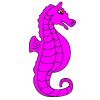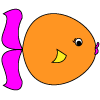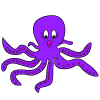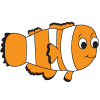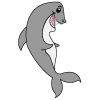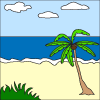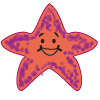Dolphins can be found in every ocean in the world, and even in some rivers.
Today pollution is the biggest threat to DOLPHINS! Toxins from oil and gas driling and chemical run off from coastlines make dolphins vulnerable to disease and infections. In the year following the massive 2010 oil spill in the Gulf of Mexico, more than 12 times as many bottlenose dolphin bodies washed ashore than usual. It will always be a reminder that by keeping the ocean clean and pollution free is the only way to keep it safe for dolphins, marine life and the humans on the planet.
Their many different sounds, that can sound like moans, groans, squeaks, whistles, and grunts can sound as if they're playing instruments in a metal band. But bottlenose dolphins make their own kind of music.
Bottlenose dolphins send messages to one another in different ways. They squeak and whistle and use body language—leaping as high as 20 feet (6 meters) in the air, snapping their jaws, slapping their tails on the surface of the water, and even butting heads.
So what are they trying to tell each other? They can alert each other to possible dangers, let others know there is food nearby, and keep track of others in the group.
Nasal sacs inside the dolphin's head are what make it possible for the dolphins to vocalize.
Blowholes located in their heads open and close, allowing the dolphins to breathe. (Being mammals, dolphins have to come to the water's surface to breathe, just like you.)
Each individual dolphin seems to have its own signature whistle, but the sounds we can't hear may be the most important.
Dolphins also produce high frequency clicks, which act as a sonar system called echolocation (ek-oh-low-KAY-shun). When the clicking sounds hit an object in the water, like a fish or rock, they bounce off and come back to the dolphin as echoes. Echolocation tells the dolphins the shape, size, speed, distance, and location of the object. |
FAST FACTS
Bottlenose dolphins may look like fish but they are mammals. They breathe air, are warm blooded, have a fixed body temperature and feed their young babies mothers milk just like humans do..
These aquatic acrobats are called bottlenose dolphins because their beaks are shaped like bottles.
Beaks are usually 3 inches (7.6 centimeters) long.
The scientific family name for dolphins is Delphinidae.
The largest dolphins are orcas, also called killer whales.
The scientific name for the bottlenose dolphin is Tursiops truncates.
Although dolphins live in most of the world's oceans, bottlenoses are largely found in temperate and tropical waters.
Males are larger than females and can be as long as 13 feet (4 meters) and weigh more than a thousand pounds (454 kilograms).
Having little or no sense of smell, dolphins make up for it with a sharp sense of hearing.
Bottlenose dolphins have excellent vision both in and out of water.
Bottlenose dolphins look like they might be grinning. Their smiles are formed by the way their mouths curve.
Females give birth every two to three years, normally one calf after a pregnancy of one year. The calves are often born tail first so they don't drown.
A calf nurses while underwater and continues nursing for up to 8 months.
|
Bottlenose dolphins also have a sharp sense of hearing. Scientists believe that the sounds travel through the dolphin's lower jaw to its inner ear and then are transmitted to the brain for analysis.
Can we talk with these animals? A lot of study has gone into bottlenose dolphin sounds. At one time some people believed that learning the meaning of the noises might allow us to talk to dolphins and train them to respond to words instead of sounds.
Scientists have discredited that belief but continue to monitor "dolphin talk" as a way to better understand what makes bottlenose dolphins tick (and click!).
Text by Marion McGrath
Beautiful animals they are. It is important to remember that bottlenose dolphins can be unpredictable and aggressive—to each other and to humans. They must be respected as the wild.
Millions of years ago, dolphins' ancestors hd legs and walked on land. All CETACEANS- the group that includes; dolphins, whales, and porpoises- are likely descended from a group of meat-eating, hoofed mammals. This ancestor began moving ino the sea around 50 million years ago, probably because food was abundant there.
Over the years the cetacean family tree branched out from those early ancestors ino the three main groups that we see today-- dolphins, whales, and porpoises. But you can find evidence of modern cetaceans land bound traits and origins. Their skeletons contain small, rod-shaped bones near their pelvis. These bones are the remains of hind legs-- evolutionary leftovers after millions of years of turning into full time swimmers.
|
When born, a bottlenose calf is approximately 3 to 4 feet (.9 to 1 meter) long and weighs about 44 pounds (20 kilograms).
Bottlenose dolphins swim in groups called pods. A pod usually has a dozen or so animals.
Pods often combine to form herds. Some herds include several hundred dolphins.
Once in a while they may feed alone, but most often bottlenoses team up and hunt in groups. While several bottlenose dolphins in a group herd the fish into smaller and smaller circles, the others take turns zipping into the school to snap up fish!
They have been known to approach boats and people in the water in a seemingly friendly fashion, letting themselves be touched. Their skin is smooth and feels sort of like an inner tube.
The brain of a bottlenose dolphin is larger than a human brain. However, the part concerned with intelligence is not.
Dolphins will eat almost any kind of fish. Their diets also include squid and small crustaceans such as shrimps. They swallow their food whole.
Bottlenose dolphins are very social animals.
Dolphins have been spotted jumping high in the air, landing on their sides or back with a great splash.
Reference from:http://kids.nationalgeographic.com/ |
 |
|




